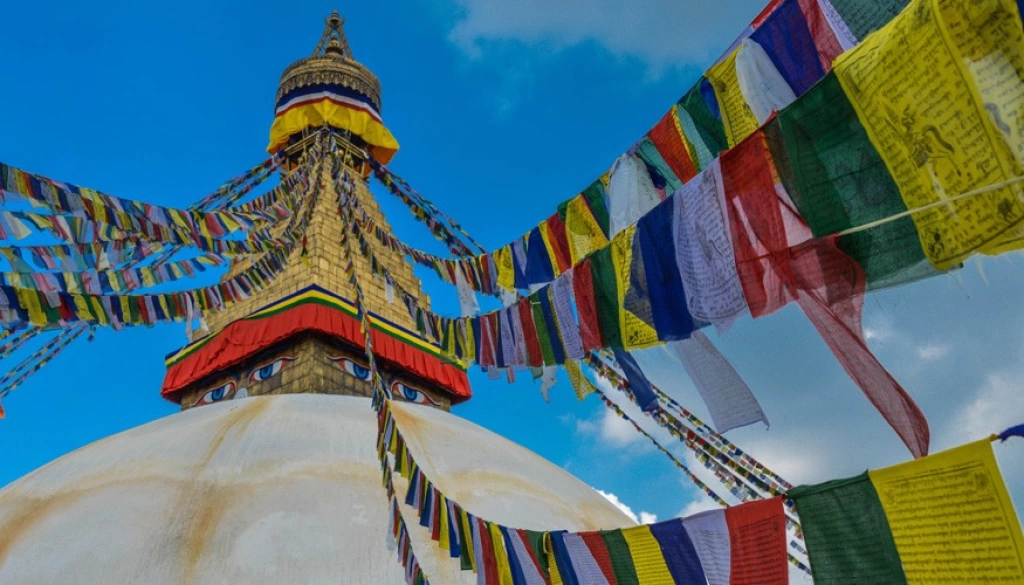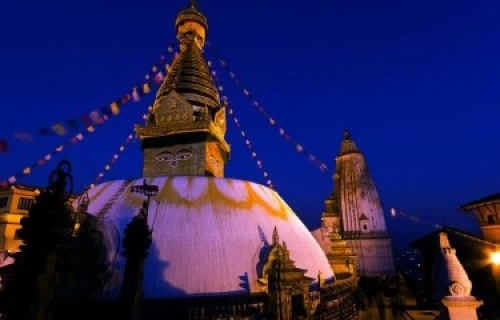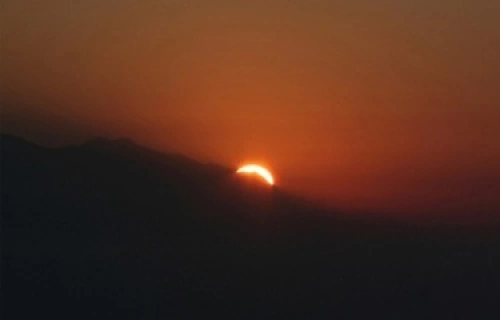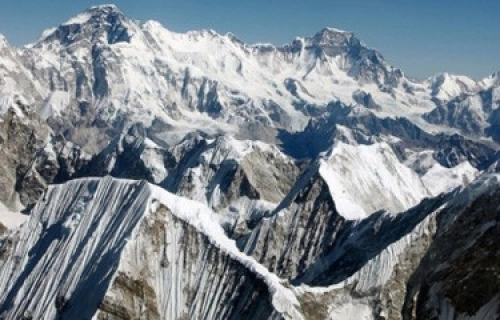About Kathmandu Heritage Tour
Kathmandu valley has been the cultural and spiritual center of Nepal since ancient times. Kathmandu Heritage Tour is ideal for tourists who have an extra day in Kathmandu at the beginning or end of their itinerary. It is designed to give you a deeper understanding of the sacred traditions and culture of Nepal with a visit to four UNESCO recognized heritage sites.
Annapurna Foothills Treks and Expeditions will pick you up from your hotel at 9 am and drop you off at 4pm. We provide an excellent tour guide who is knowledgeable about the city and its history. Our vehicles are air-conditioned, comfortable and driven by expert drivers.
AM: Sightseeing tour of Boudhanath Stupa and Pashupatinath
Boudhanath - The Boudhnath Stupa is one of the most important Buddhist sites and one of the largest in the world. A considerable number of Tibetan exiles live in the surrounding streets. Colourfully clothed monks sell beautiful Tibetan texts and artwork. This may be one of the few places where the culture of Tibet is accessible and free.
In late afternoon, the crowds of tourists have already moved on and the surroundings of the temple feel like a Buddhist village. The gompas surrounding Boudhnath hold prayer services and the members of the local community come out to circumambualte the stupa, (in a clockwise direction) their faith and the opportunity to chat with friends moving them slowly around, is a particularly memorable sight.
Pashupatinath - Pashupatinath is the most sacred Hindu pilgrimage site in Nepal, and one of the 275 Holy Abodes of Shiva on the continent. It is believed to date back to 400 A.D. It is the preferred site of cremation for Hindus, as it is situated along the banks of the sacred Bagmati River; ashes swept into this river eventually reach the Holy Ganges. The fires of cremation burn almost continuously. Thousands of devotees come to pay homage to Pashupatinath every day and a yearly festival, Maha Shivaratri brings over 700,000 devotees.
The square pagoda-like temple, built in 1697 by King Bhupatindra Malla, bears the signature of architecture at that time with its gold-plated roof, be-jeweled doors, flowered motifs and woodcarvings of the finest artisans. The temple stands in the middle of an open courtyard which can be entered from all the four sides by gold-gilt doors. Attractive gold paintings of other gods and goddesses are found on the both sides of each door. The support beams have carved figures of different sexual poses, as well as the sun and moon. In the central sanctum of the temple lies the 3-foot tall Shiva linga.
PM: Sightseeing tour of Kathmandu Durbar Square and Swayambhunath
Kathmandu - The Kathmandu Valley has been inhabited for thousands of years. Its rich history has resulted in the beautiful cultural, artistic and architectural fusion that is seen today. Elaborate temples, monasteries and courtyards crafted by Newar artisans during the Malla Empire from the 12th to the 17th century, are monuments of the appreciation the Malla nobility had for art and architecture, and their gradual conversion from Buddhism to Hinduism.
The Kathmandu Durbar Square is like an open-air museum. The ancient royal palace, also known as the Hanuman Dhoka, is guarded by a statue of Hanuman, the monkey-god. Wrapped in a red cloak the deity’s face is covered by a thick layer of sindur, a red dust mixed with mustard oil. It is also home to the Living Goddess. The virgin goddess, known as Kumari, may look down from one of the upper windows.
The palace courtyards of the Malla kings almost always included several temples. One of the famous temples found in this square is the towering, three-roofed, Taleju Temple, built by King Mahendra Malla in1564 A.D. Another is the 16th century Jagannath Temple is famous for its intriguing erotic figures, carved in the wooden struts and eaves.
Kathmandu derives its name from the 12th century Kasthamandap Temple, which was built from the timber of a single tree. The towering Nautale Temple is named for its nine story structure, built by the later Shah dynasty, with intricate carved wooden doorways, roof struts, and massive lattice windows full of mythical figures.
In the labyrinth of narrow alleys in Old Kathmandu city there are shopping bazaars teaming with sights, sounds and smells to overload your senses.
Swayambhunath - Swayambhunath is also known as the Monkey Temple, as there are hundreds of cheeky monkeys living around the temple. Swayambhunath literally means the Self-Created. A climb up the steep stairway of 365 steps brings you to the splendid hill-top monastery from where you get a great view of the city.
Emperor Ashoka is believed to have visited this hill site over 2000 years ago. The main structure of the round stupa is composed of brick and clay. The main stupa supports a tall conical spire, topped by a copper pinnacle. At the base of the spire on all four sides, are the painted All Seeing Eyes of Lord Buddha.
Swayambhunath is a prime example of the beauty of coexistence and fusion of relition. Both Buddhists and Hindus pay homage at this mosaic of stupas and pagoda temples which were constructed by a succession of kings and noblemen over many years.
UNESCO has recognized seven groups of monuments and buildings in the Kathmandu Valley which display the cultural heritage. The seven historic and artistic achievements include the Kathmandu Durbar Square (Hanuman Dhoka), Patan Durbar Square and Bhaktapur Durbar Square, the Buddhist stupas of Swayambhunath and Boudhanath and the Hindu temples of Pashupati and Changu Narayan of the Kathmandu Valley.
This day trip can be experienced throughout the year. Let us know which dates are suitable for you to start the tour.



